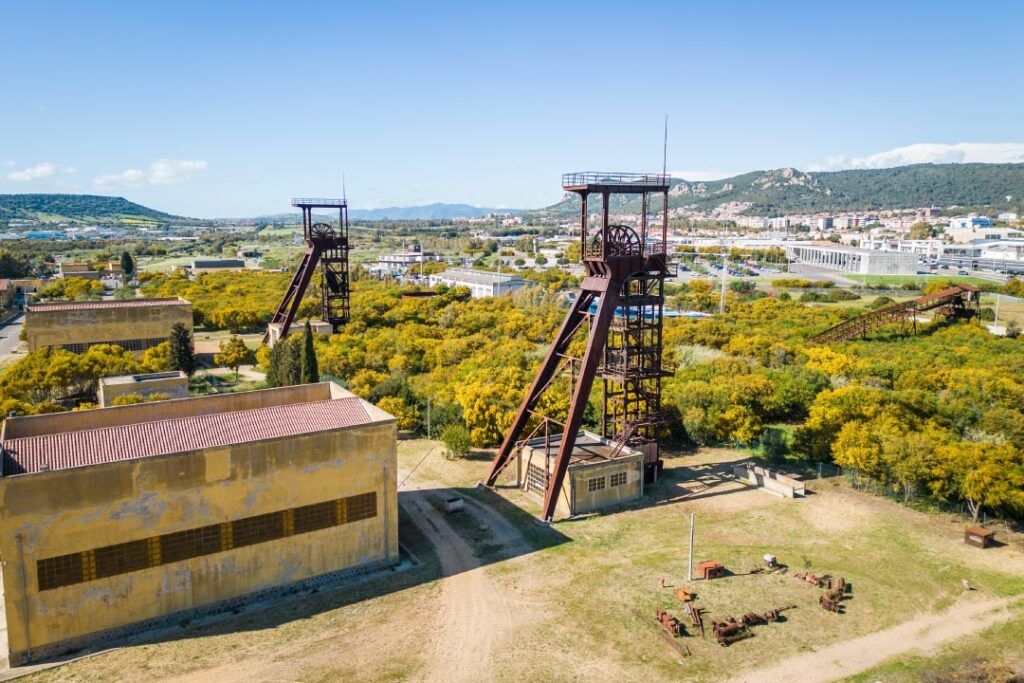Chiesetta operaia e Quartiere Lotto B
- Home
- Culture, religion and art
- Chiesetta operaia e Quartiere Lotto B
Chiesetta operaia e Quartiere Lotto B
The Early Steps of Carbonia: labor, community, and faith
At the heart of Carbonia’s history, the Lotto B District reflects the city’s early days, marked by hard work, community spirit, and religiosity.
In the 1940s, as Carbonia began to emerge on the industrial landscape, thousands of workers flocked to the city to contribute to its growth. This was a time of great transformation, and within this context, an important workers’ housing district was established. Here, miners and construction laborers would find shelter after long, arduous days of work.
The Lotto B District bore witness to an intense and hopeful way of life, further enriched by the establishment of the Workers’ Church (Chiesetta Operaia). This small yet significant structure became a symbol of faith and social cohesion during those formative years.

The Workers’ Chapel, the Consecration of the Rosmarino District
The establishment of the Rosmarino District marked a pivotal moment in Carbonia’s history, providing workers with a space to express their faith and gather as a community. In 1947, under the guidance of Don Vito Sguotti, the district was consecrated to the Beata Vergine Addolorata. Initially, masses were held in a former dormitory near the neighborhood’s recreational center.
The chapel, designed by architect Granata, was adorned with a small “sail-shaped” bell tower housing a modest bell. Inside, a masonry altar, balustrades, and even an harmonium were added. The Church of San Ponziano donated a statue of the Beata Vergine Addolorata, and over time, additional devotional offerings were made, including a statue of Saint John and a wooden crucifix.
In 1953, the chapel was entrusted to the priests of the Opera of Don Luigi Orione – Sons of Divine Providence, and on October 28 of the same year, the Rosmarino structure officially became a parish, named the Beata Vergine Addolorata.
The so-called “Workers’ Chapel,” now deconsecrated, remained in use until 1958, when the new parish church was completed.
Today, this historically and spiritually significant area is part of a revitalization project initiated by the Municipality of Carbonia alongside Lotto B. The preservation of this architectural and spiritual heritage reflects Carbonia’s commitment to honoring its roots, transforming spaces once central to workers’ lives into sites of historical and cultural interest for both residents and visitors.
Lotto B District, a dormitory quarter rooted in Carbonia’s early days
Born as a dormitory quarter for the hundreds of workers shaping the fledgling city of Carbonia, the Lotto B District experienced a vibrant, albeit challenging, period of growth. Here, construction workers, after long days of labor, found modest but functional accommodations, which also housed miners and individuals without stable family ties. Designed by the Technical Office of ACaL, the homes stood out for their simplicity and exposed brickwork—distinctive features that soon marked Lotto B as one of Carbonia’s poorest and most disadvantaged neighborhoods.
Nestled at the foot of the Rosmarino Hill and bordered by Via Sicilia, its side streets, Via Tirso, and Piazza I Maggio, Lotto B offered living conditions that were often precarious. Frequent pest control efforts and law enforcement interventions were necessary to manage the tensions arising from overcrowding and shared living spaces. Despite these difficulties, the district remained a hub for the city’s labor force until 1943, when many workers were relocated to newly built workers’ hotels, and Lotto B’s buildings were repurposed for military use.
A notable feature of this community was the neighborhood recreation center at Piazza I Maggio, located in building no. 5. This essential social hub, complete with a beverage distribution outlet, opened on April 6, 1941, and was named after the gold medalist Ernesto Zorcolo. It remained operational until its closure on September 30, 1966, preserving a vital fragment of Carbonia’s working-class life, illustrating the interplay between labor and social interaction in the rapidly expanding urban fabric.
Today, the memory of the Lotto B District lives on in its streets and in surviving structures that bear witness to its working-class past. The Municipality of Carbonia, committed to preserving its historical heritage, has included Lotto B in revitalization projects, ensuring these spaces continue to tell a significant chapter of the city’s mining and architectural history.

